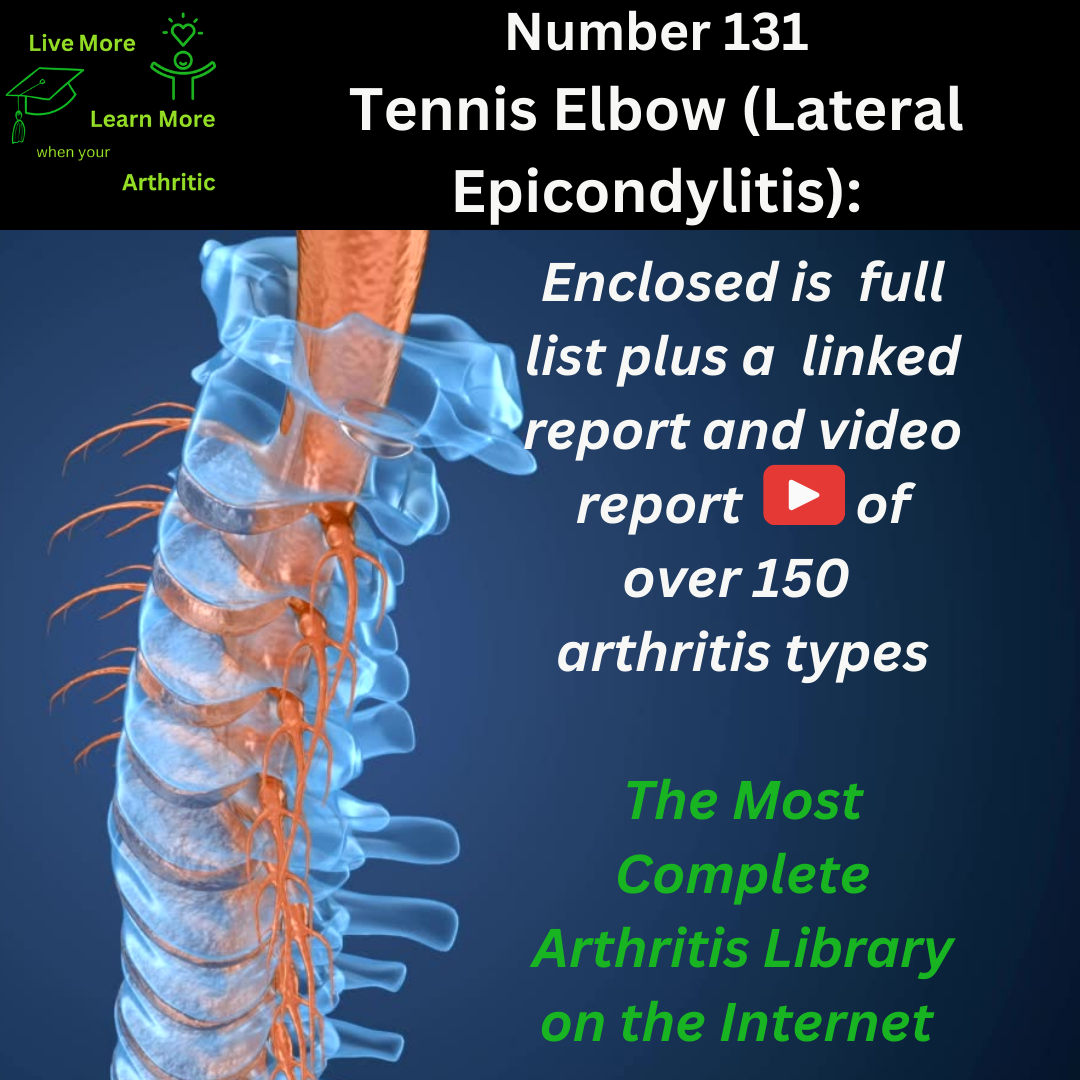
Tennis Elbow (Lateral Epicondylitis): Number 131 of around 150 types of Arthritis
Understanding Tennis Elbow (Lateral Epicondylitis)
Tennis elbow, medically known as lateral epicondylitis, is a common condition that affects the tendons in the elbow, particularly those attached to the bony prominence on the outside of the elbow. Despite its name, tennis elbow can occur due to various repetitive arm motions, not just from playing tennis.
 Parts of the Body Most Affected
Parts of the Body Most Affected
Tennis elbow primarily affects the tendons of the forearm muscles that attach to the lateral epicondyle of the humerus bone in the elbow. These tendons can become inflamed and painful due to repetitive stress or overuse.
Description of the Disease
Lateral epicondylitis is characterized by inflammation or degeneration of the tendons on the outside of the elbow joint, leading to pain and discomfort with certain arm movements. The condition is often related to repetitive gripping, twisting, or lifting activities.
Causes and Triggers
The primary causes of tennis elbow include repetitive arm movements or activities that strain the tendons of the forearm muscles. Common triggers include:
- Overuse of the forearm muscles in activities such as tennis, golf, gardening, or repetitive computer mouse use
- Poor technique or improper equipment during sports or work-related tasks
- Age-related degeneration of tendons, which reduces their elasticity and resilience
Symptoms and Limited Range of Motion
Symptoms of tennis elbow may include:
- Pain and tenderness on the outside of the elbow, especially when gripping or lifting objects
- Weakness in the affected arm, making it challenging to perform certain tasks
- Pain that radiates down the forearm
- Limited range of motion, particularly with wrist extension and forearm rotation
Common Ages of Onset and Risk Factors
Tennis elbow typically affects individuals aged 30 to 50 years who engage in repetitive activities involving the forearm muscles. It affects both men and women, although men may be slightly more prone due to occupational factors.
Complications
Potential complications of tennis elbow include:
- Chronic pain and disability if left untreated
- Difficulty performing daily activities or participating in sports
- Decreased grip strength and functional impairment
Is Tennis Elbow Autoimmune?
Tennis elbow is not considered an autoimmune condition. It is primarily caused by repetitive stress or overuse of the forearm tendons.
Proactive Approach for Quality of Life
Achieving a higher quality of life with tennis elbow involves:
- Rest and avoiding activities that exacerbate symptoms
- Physical therapy to strengthen forearm muscles and improve flexibility
- Use of ergonomic equipment and proper technique during activities
- Gradual return to activities to prevent recurrence
Complications of tennis elbow can include chronic pain, weakness, and limited function if not managed appropriately. Early intervention, lifestyle modifications, and proper rehabilitation can minimize complications and promote recovery.
In summary, tennis elbow (lateral epicondylitis) is a condition characterized by inflammation and degeneration of the tendons on the outside of the elbow joint. By adopting a proactive approach that includes rest, physical therapy, ergonomic modifications, and gradual return to activities, individuals with tennis elbow can achieve a higher quality of life and reduce the risk of long-term complications associated with this condition. Regular follow-up with healthcare providers is essential for effective management and symptom relief.


